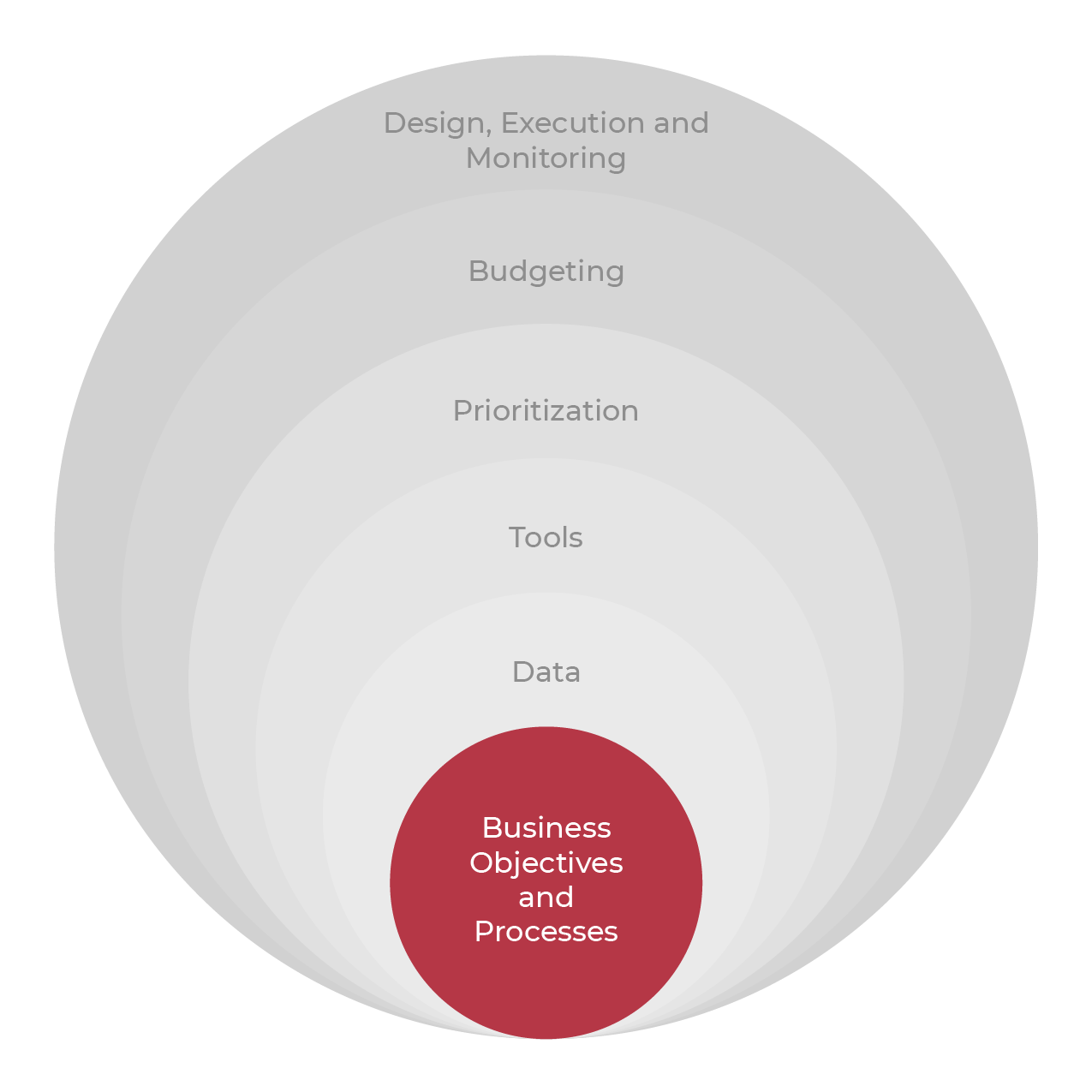In the last post, I focused on the importance of aligning your Asset Management (AM) Program with your organization’s strategic goals and objectives. The next critical step is to look to leverage existing business processes as outlined in the Integrated Asset Management (IAM) Framework presented in the attached image.
When we start with a focus on where an organization is today with regards to business processes, we often hear some variety of “The whole point of this exercise is to improve, not to stay the same”. While it is true that AM is really all about continuous improvement over time, where we have seen the greatest success in AM programs is actually when they start from a realistic pace focused on current state.
Implementing an AM program is not just an exercise in Asset Management, it is also an exercise in Change Management. After the lack of senior leadership support (see last post), one of the most common reasons for failure of an AM program is lack of staff support. An AM program should impact nearly everyone that is responsible for constructing, acquiring, maintaining, renewing, and divesting of the assets in your organization.
A failure to start from where you are is a sure-fire way to kill any buy-in or momentum to a program. Additionally, the exercise of understanding current processes also serves to engage staff from across your organization into the project at the earliest stages. By being genuinely curious and asking great questions, you can create a sense of ownership at all levels throughout your team.
Once you have clarity of where you are starting from, you can then begin to look at how “far” you can go in this version of our AM program. As part of the discovery of understanding “where are we now” it is also vital to gain an understanding of your team’s capacity of change. If you have a nimble team that is used to and thrives on change (congratulations), then you can go further with this iteration of your AM program.
However, if your team is more resistant to change (like many), you may have to tell your AM story in shorter chapters at first, so you don’t exceed your organization’s capacity to change.
This is one of the most nuanced parts of any AM program. How far do you push with this version. Being too conservative or “sand bagging” won’t get you where you need to go. Developing a program that is too ambitious will often fail to launch as it will be seen as unrealistic, and people will give up before they even start.
However, when it is done right and the foundation of your AM program is built on alignment with your current Business Objectives and Processes, the odds of success skyrocket.
Next post, we will move on to the second layer of the onion and discuss the importance of consistent and defensible data.




